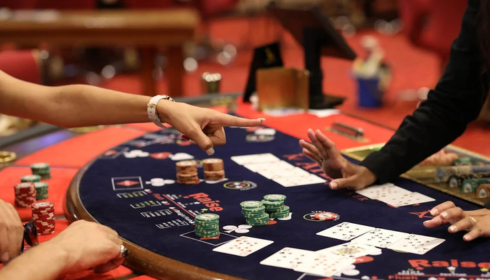Understanding the Traditional Betting Phenomenon

Indian Satta, also referred to as Satta Matka, is a popular form of lottery-style gambling that has deep cultural roots in India. Originating in the 1960s, this game started as a betting system on the opening and closing rates of cotton transmitted from the New York Cotton Exchange. Over time, it evolved into a more structured form of number-based gambling and spread across various parts of India.
Though technically illegal in many parts of the country, Indian Satta continues to enjoy widespread popularity, especially in urban and semi-urban areas. With the rise of the internet and mobile apps, the game has taken a modern turn, allowing players to participate anonymously and conveniently. The digital era has provided a new lease of life to this old-school betting tradition, making it more accessible than ever before.
History and Evolution of Indian Satta
The concept of Satta Matka began with placing bets on the cotton rates published from the New York Cotton Exchange. As this practice was banned in the 1960s, gamblers devised new methods to keep the game alive. This led to the drawing of random numbers from a pot or “matka,” which became the new way to play. The term “Matka” means earthen pot, and it became a symbol of the game.
Over the years, the game format was refined. Now, Indian Satta primarily revolves around choosing a set of numbers and placing bets on combinations. These numbers are drawn at random, and the results are declared at specific times of the day. Famous markets such as Kalyan Matka and Worli Matka came into existence, becoming household names for betting enthusiasts.
How Indian Satta Works
Indian Satta is primarily a numbers game. Participants choose a set of three numbers ranging from 0 to 9. These numbers are added together, and the last digit of the sum becomes part of the final result. For instance, if the chosen numbers are 3, 6, and 2, their total is 11, and the last digit “1” becomes the key figure. Thus, a typical betting set would look like 3-6-2 1.
These combinations are then used to place various types of bets, such as Single, Jodi, Panna, and more. Each betting type offers different odds and payouts. The game is fast-paced, and results are declared at set intervals throughout the day, adding an element of excitement and suspense for the players.
Popularity and Cultural Impact
The popularity of satta matka online platforms has soared in recent years. Many players are drawn to the thrill of predicting the right numbers and the possibility of winning large sums of money. Despite the risks and legal restrictions, people from different walks of life continue to indulge in the game.
Indian Satta has also influenced pop culture, with references found in Bollywood movies, TV shows, and local folklore. Characters resembling famous Satta kings like Ratan Khatri have been portrayed on screen, reflecting the game’s deep-rooted impact on Indian society.
Legal Status and Risks
It is important to note that gambling laws in India are stringent. Most forms of betting, including Satta Matka, are considered illegal under the Public Gambling Act of 1867. However, since the law is not uniformly enforced, many underground networks and online portals continue to operate.
Participants should be aware of the risks involved, including financial losses, legal trouble, and addiction. It is advisable to avoid illegal betting activities and seek entertainment through safer, legal alternatives such as state-run lotteries or fantasy sports.
Conclusion
Indian Satta, despite its controversial nature, remains a fascinating aspect of India’s gambling landscape. It has evolved from simple cotton rate betting to a sophisticated numbers game that captivates millions. While its appeal is undeniable, players must approach it with caution and responsibility. As technology continues to reshape traditional games, Indian Satta’s digital presence is likely to grow—but so too is the need for regulation and awareness.








